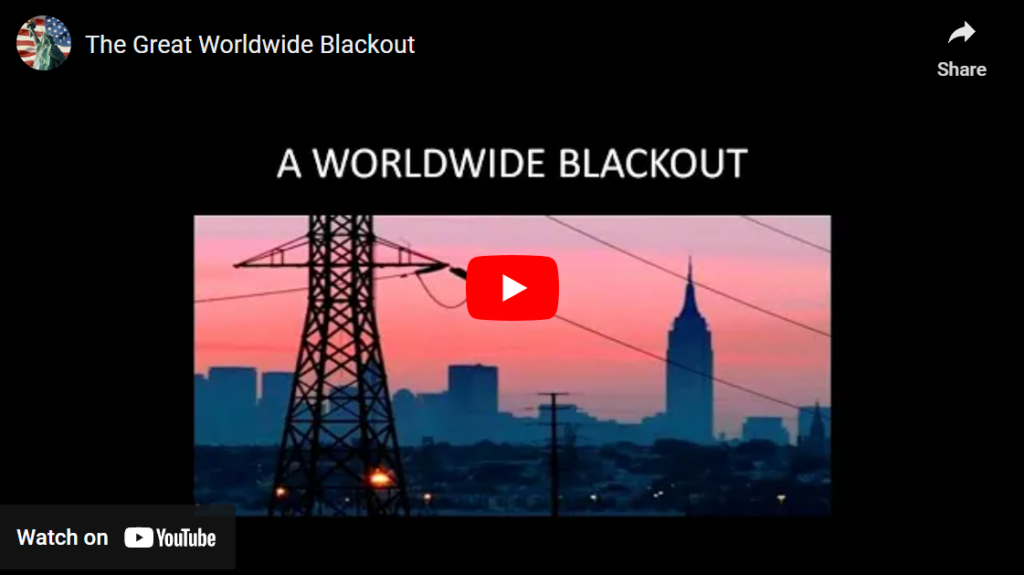In a world where we are bombarded with news of changing climates and the desperate need to protect our planet, there’s a silent storm brewing. The newest reveal from the Center of the American Experiment (CAE) points to something ominous on the horizon.
Dive into the facts and see the potential catastrophe. The Biden administration’s freshly minted regulations for power plant emissions, in a bid to tackle climate change, are speculated to cast the entire Midcontinent Independent System Operator (MISO) into an abyss of darkness.
CAE’s analysis sheds light on the dire economic repercussions. Stakeholders will find themselves out nearly $250 billion. And, if you’re hoping that constructing adequate infrastructure to prevent these widespread blackouts would balance the scales, think again. The cost of such infrastructure eclipses the projected benefits of the EPA’s regulations, and it’s not even close. By 2055, America will be paying more for less, quite literally.
Isaac Orr, a policy fellow at CAE, gave a haunting analogy: “This is the regulatory equivalent of studying the structural integrity of the top floor of a 100-story building without doing so for the preceding 99 floors.”
Remember our previous expose on the United Nations and their intensified global warming campaign? It seems that everyone’s jumping on this bandwagon, urging politicians to become the enforcers of the green initiative. But at what cost?
Here’s the deal with the EPA’s new game plan: it’s rooted in the belief that reducing carbon dioxide (CO2) emissions, especially from power plants, is paramount to avoid an apocalyptic meltdown of our planet. But let’s pause and ask: Does the strategy fit the narrative?
Must Watch -> The Great Worldwide Blackout

The EPA, under the leadership of the Biden administration, is on a mission to place extreme limits on the CO2 emissions from American power plants. While the intention might seem noble, the aftermath looks bleak. This massive reduction in electricity production meets a burgeoning demand from the EV industry. Can you sense the impending grid catastrophe?
Various media channels reported: “The EPA’s proposed regulations would necessitate fossil fuel-fired power plants to adopt novel technologies, such as carbon capture and sequestration (CCS) and hydrogen blending, aiming to cut down their greenhouse gas emissions in the coming years.”
CAE’s response? A clarion call, emphasizing the EPA’s gross overestimation of wind and solar potential. This miscalculation puts the 45 million residents relying on the MISO power grid at a heightened risk of blackouts. Further, CAE questions the EPA’s proficiency in rolling out such a vast regulation on America’s power sector.
Fast forward to a future where the EPA’s vision comes to fruition: MISO, catering to 15 states, would be glaringly inadequate in supplying electricity as per demand. This bleak picture is painted with rolling blackouts as a routine occurrence for millions of Americans.
For MISO to rise to the occasion and tackle the challenges the EPA’s rules present, an eye-watering $246 billion would be needed by 2055. Break it down: An annual expense of $7.7 billion, dwarfing the EPA’s optimistic $5.9 billion annual benefits.
Isaac Orr shines a spotlight on the EPA’s responsibilities, “EPA is mandated to back its proposed regulations with solid scientific and economic evidence in a document, the Regulatory Impact Analysis (RIA).” He added that the EPA’s skewed assumptions in its analysis paint a misleading portrait, obscuring the genuine impact on grid reliability and the astronomical costs.
To navigate these murky waters, we must question the authenticity of the narratives we’re fed and understand the consequences they may birth.
Only then can we hope to harness genuine solutions for a brighter, more sustainable future.
Video ► Donald J. Trump: “If You Want Peace, Prepare For War. . .” Save America!





